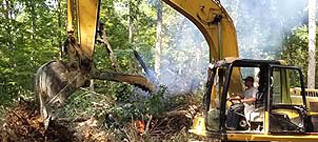Problem partially attributable to crab cannibalism
By ROBBIE FEINBERG
WASHINGTON—Chesapeake crabbers and scientists say 2013 has been one of the worst years in decades for blue crab harvesting, and scientists are attributing the collapse, at least in part, to a murderous biological process: crab cannibalism.
Brenda Davis, manager for the Maryland Department of Natural Resources’ Blue Crab Program, said last year’s count of 765 million crabs in the Chesapeake Bay was a 20-year high. And with so many creatures clumped together, Davis said, the crabs took care of each other.
“So when you get in that situation, there’s something called density-dependent mortality,” Davis said. “Basically, they’re incredibly cannibalistic, and they eat each other … Last year, there were lots and lots of little crabs. So they’re likely to be eating each other at a fairly high rate.”
According to a 2013 dredge survey from the Maryland Department of Natural Resources, crab numbers were down even before the crabbing season started this year. The survey, which was conducted this winter, indicated there were only 300 million blue crabs in the bay, a decline of more than 60 percent from last year.
Davis said crab cannibalism wasn’t the only factor that led to a decreased population. She added that Maryland’s warmer, saltier waters in 2012 also played a part, as the increased temperatures allowed fish like striped bass and red drum, predators of the blue crab, to invade the area.
“So water temperatures probably won’t have a direct effect on blue crab abundance,” Davis said. “But it will affect an abundance of their predators.”
Dan Brooks, president of the Chesapeake Bay Seafood Industries Association, said the declining crab harvest has severely hurt the seafood industry, even forcing some watermen to leave their boats and find new jobs.
"Just the scarcity of crabs,” Brooks said. “Prices are up significantly. But luckily for Maryland watermen, this has not only been a bay-wide event but a coast-wide event. One thing that's kind of strange is that it's up and down the east coast. From Florida to Delaware.”
If the decrease in crab harvests had only occurred in Maryland and not across the east coast, Brooks said, fishermen in other states could have sold their crab at lower prices, taking away business from Maryland watermen.
Crab numbers in the bay have been low before, dipping to 254 million in 2001. To protect the species from collapse, both Maryland and Virginia took action in 2008, with each state imposing a 34 percent reduction in the catch of female blue crabs.
Those restrictions, combined with natural biological processes, led to the blue crab population recovering and reaching a 20-year high of 765 million in 2012. This year, both states have imposed an additional 10 percent restriction on the catch of female blue crabs.
John McConaugha, a professor of biological oceanography at Old Dominion University, said the states are taking the right approach. And because of that recent recovery, he said not to worry just yet.
“The good news is that it seems to be a very robust fishery and that it can come back,” McConaugha said. “That’s the thing with fisheries. You have good recruitment years and bad recruitment years, and they normally come back.”


